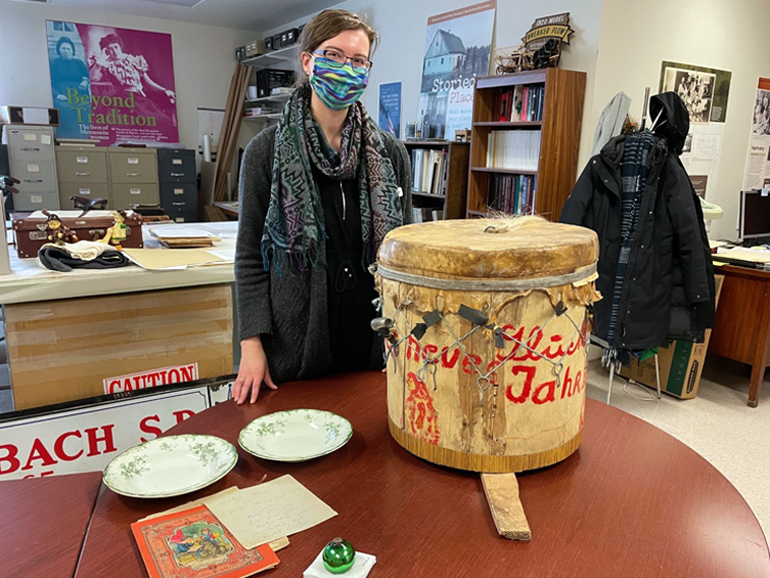When Mennonites came to Canada many years ago, they brought with them some items and many Christmas traditions.
Kara Suderman is the curatorial assistant with Mennonite Heritage Village in Steinbach.
She says the museum has some special soup plates that were donated.
These plates were used in Russia and were set out on Christmas Eve instead of stockings.
 Soup plates at the top of this image, Christmas wish books in the centre, and a treasured ornament for the Christmas tree at the bottom.On Christmas morning, children would wake up to plates filled with oranges, apples, cookies, nuts and chocolates.
Soup plates at the top of this image, Christmas wish books in the centre, and a treasured ornament for the Christmas tree at the bottom.On Christmas morning, children would wake up to plates filled with oranges, apples, cookies, nuts and chocolates.Another tradition was for children to prepare special Christmas wishes that they would present to their parents.
This was a way for children to get excited about giving their parents a gift, as they had no money to purchase anything.
The wishes would be written on paper and those wish lists would be saved in a special folder.
Suderman says the museum has some of those special lists that were made by Mennonite children in Russia before they came to Canada.
Christmas decorations were considered true treasures for many Mennonite families and some items were brought here during the migration from Russia to Canada.
Suderman says they have a special tree ornament that was donated to the museum, it came from Russia in the 1920s as part of the Russländer migration.
It’s a shiny green bauble and might not appear to be anything fancy.
But Suderman says Mennonites seldom owned anything that did not have a useful purpose, so for Mennonite families to own Christmas decorations, it was a treasure.
Another unique item at MHV is a replica of the brommtopp, a friction instrument that was used on New Year’s Eve.
 A group of Mennonite mummers with the Brommtopp instrument, circa 1928 near Rosenfeld Manitoba, photo courtesy Marge Friesen.
A group of Mennonite mummers with the Brommtopp instrument, circa 1928 near Rosenfeld Manitoba, photo courtesy Marge Friesen.Youth would dress up and go door-to-door, waiting to be invited inside.
Suderman says they would entertain the household and then be rewarded with food, drinks and maybe a few coins.
She says that tradition continued after the Mennonites arrived in Canada, but after a few years, it seemed to end.
While traditions often carry on from generation to generation, they sometimes change a bit over time.
Or, in the case of the brommtopp, they just seem to end. There is more information about these traditions in a book put together by the museum. It's called A Collected History: MHV.
It’s always interesting to learn about the history, and to watch for new traditions to begin.
-This article was first published by Steinbach Online on December 25th, 2021.

















